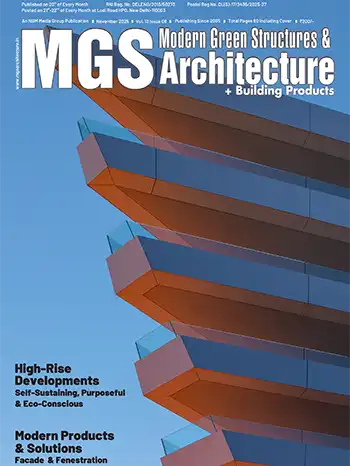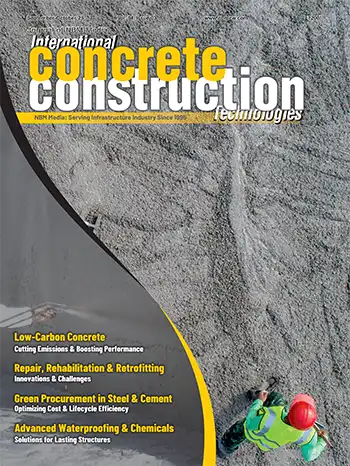Manish Mehan, CEO & MD, TK Elevator India
A green building aims to reduce energy consumption through sustainable and energy-saving building design, using energy-efficient equipment, and integrating sustainability-related features such as green walls and solar panels. In the wake of global warming and pressing concerns about energy consumption, a green building is becoming increasingly relevant to urban lives.

However, the popularity of green buildings is hindered somewhat by funds and budget constraints of owners and developers, and limited awareness of their operation and maintenance requirements. It is believed that green buildings incur higher operation and maintenance costs in comparison to conventional buildings. But the truth is that by optimizing key systems such as lighting, air-conditioning, electrical and vertical transportation, green buildings can, over a longer term, help reduce energy consumption and operation costs due to their higher operational efficiency, and, most importantly, the environmental and financial benefits they can offer.
Next-generation elevators reduce energy consumption in high-rises
In today’s times, buildings are responsible for 40% of overall energy consumption, and around 10% of the building’s electricity is consumed by traditional elevators. But this can be overcome with smarter and newer elevator technologies. Using TK Elevator’s revolutionary TWIN elevator system as an example, with two elevators operating independently in one shaft, the TWIN offers the benefits of significantly increasing system capacity, without the need for extra elevator shafts.The biggest advantage of the TWIN elevator system is its ability to park one of the two cars while the other stays in operation. This means that when passenger volumes are low, very little energy is consumed by the non-moving cars. Plus, the elevator system can be equipped with energy recovery devices that can feed about 30% of energy back into the building’s power grid.
Smart elevator solutions can be a great help in dealing with the challenges faced by Green Buildings
Manish Mehan
Digital and sustainable mobility solutions
At TK Elevator, our focus is on using the latest technologies to drive energy efficiency and minimise the overall energy consumption of buildings. For instance, our elevators can be equipped with MAX, which provides the benefits of data analytics to facilitate predictive maintenance services.MAX is a game-changing predictive and pre-emptive maintenance solution that extends remote monitoring capabilities to dramatically increase the current availability levels of existing and new elevators. Utilizing the power of Microsoft Azure Internet of Things (IoT) technology, MAX predicts maintenance issues before they occur and empowers elevator engineers by flagging the need to replace components and systems before the end of their lifecycle.
Our AGILE Destination Control (DSC) also improves system efficiency and passenger experience by effectively shortening wait and travel times. Compared to conventional elevator control systems, the AGILE DSC increases passenger handling capacity by up to 30%, minimizes passengers’ travel times to their destination, and reduces crowding in lift lobbies. DSC also allows for much more flexibility in elevator grouping, lift core layouts, and overall building design.

Applications
Elevator solutions such as TKE’s TWIN used in newly built skyscrapers and high-rises can effectively reduce urban sprawl and its associated impacts, but older buildings can also be turned into more sustainable or “greener” ones by modernizing their vertical mobility system. Digital solutions such as TKE’s MAX and AGILE DSC can also bring operation and energy efficiency benefits to older buildings by means of modernization.In a nutshell, the concept of green building applies not only to new state-of-the-art high-rises and newly developed urban areas but to all kinds of buildings and infrastructure; thereby extending the benefits of reduced environmental impact and enhancing the health and well-being of occupants.















